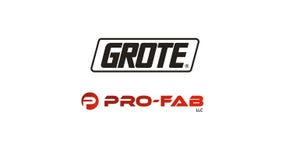November 28, 2011
To help industrial plants maximize their efficiency, improve dust collection performance, save energy, and boost production, GE has introduction a new “troubleshooting guide” that draws on the company’s four decades of expertise in dust collection technology and services. GE anticipates that plant operators in the cement, rock dust, power generation, and process industries will find the guide helpful.
Available for download at www.ge-energy.com/baghousetroubleshooting, the guide features more than 50 pages of tips for plant operators, regardless of the type of equipment their plants use. Each section of the guide provides concisely written content and includes images to help illustrate the solutions.
“This new troubleshooting guidebook updates the old guide we created, which quickly became one of the top reference manuals for customers with dry dust collection systems,” said Brian Vancrum, industrial filtration product general manager for GE Power & Water. “Our team has 40 years of experience solving baghouse filtration problems, and this new troubleshooting guide allows us to share that expertise to help customers quickly, conveniently, and reliably address their operational priorities.”
Some of the lessons contained in GE’s new troubleshooting guide include:
• How point venting for air conveyors and conveyor belts can help cement plants and others in the rock dust industry meet National Emission Standards for Hazardous Air Pollutants (NESHAP) regulations that will require plants to reduce emissions at the point they are generated. This approach can reduce common problems such as air conveyor emissions and also improve belt conveyor venting systems. Plants can be in a better position to meet ever-increasingly stringent emissions standards and maximize filter life with less reliance on ductwork, hoppers, airlocks or feeders.
• How startup and shutdown processes can be improved in the combustion industry, where many plants have only recently converted from electrostatic precipitators to baghouses. During startup, GE’s new guidebook highlights how important it is to monitor the temperature of the components within the steel collector, helping prevent condensation or mechanical stress in the steel components. During shutdown, the guide shows the operator how to purge dirty gases to rapidly cool the baghouse through the dew point zone, minimizing the damage caused by condensation and corrosive salts formed during shutdown.
• How proper baghouse operation in various process industries is critical during the drying process to ensure both product quality and drying production levels. A high differential pressure across the baghouse, for example, will not only reduce airflow through the system and slow production, it also can affect the retention time of the particulate in the heated gas stream.
For more information on GE, visit www.ge.com.
You May Also Like


